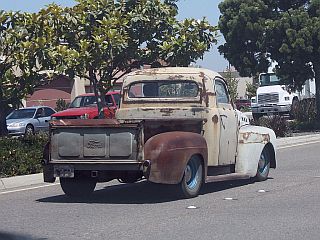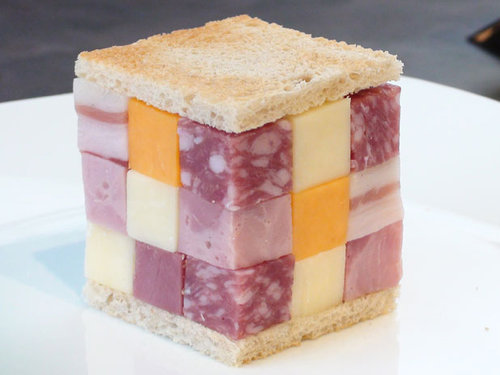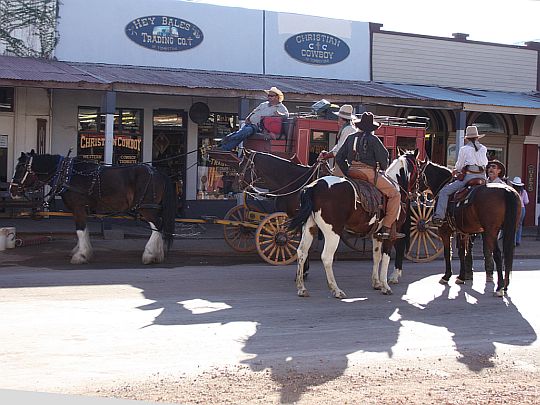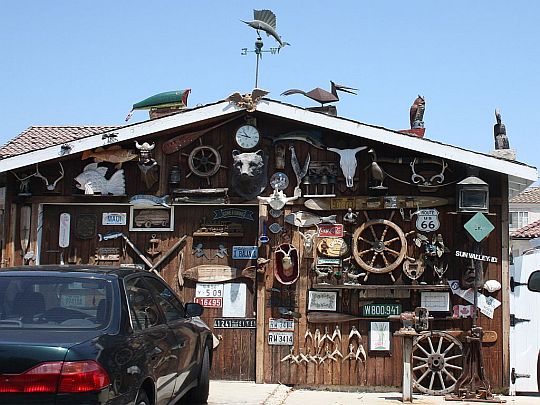Culture
Engine 1765 – Lomita Railroad Museum
While running errands today, we passed the Lomita Railroad Museum. Damsel took this photo of their locomotive as we drove by. Click to enlarge image.
The Lomita Railroad Museum was the first of its kind west of Denver, Colorado. It was made possible through the generosity of Mrs. Irene Lewis who donated the Museum to the City of Lomita in honor of her late husband, Martin Lewis, in 1967. It was a rather natural thing for Mrs. Lewis to do since she had been a dedicated railroader and spent many years building Little Engines, a business devoted entirely to developing and manufacturing miniature steam operated locomotives which were sold all over the world. The museum proudly displays some of these locomotives.
‘Patina’
 Patina is defined as a fine coating of oxide on the surface of a metal. The term ‘patina’ is most often used in discussions about collectible artifacts from the past. In many cases, removing the patina from a collectible is a big no-no.
Patina is defined as a fine coating of oxide on the surface of a metal. The term ‘patina’ is most often used in discussions about collectible artifacts from the past. In many cases, removing the patina from a collectible is a big no-no.
We once watched an episode of the popular “Antiques Road Show,” where a woman brought a nice, shiny Tiffany lamp to be appraised. She polished it up the brass and copper surfaces to a new-looking gleaming lamp. Unfortunately, without the patina, the lamp was worth a small fraction of the antique value.
Patina is not as revered on classic vehicles though. Damsel and I were on our recent vacation when we spotted this old ford truck from the 1950’s. As she was taking this picture she said “I think I need a tetanus shot from just looking at that P.O.S.
Click on the image to enlarge.
Rubik’s Cube Sandwich
Found on Kini’s Hawaiian Website:

We got a good laugh at this when we saw it. I guess the idea is to get all the cheddar, provolone, jack cheese, etc., in alignment in order to eat it. Right?
If, for some reason, you have no idea what a Rubik’s Cube is, visit Wikipedia, where the following description may be found:
The Rubik’s Cube is a 3-D mechanical puzzle invented in 1974 by Hungarian sculptor and professor of architecture Ernõ Rubik. Originally called the “Magic Cube”, the puzzle was licensed by Rubik to be sold by Ideal Toys in 1980 and won the German Game of the Year special award for Best Puzzle that year. As of January 2009, 350 million cubes have sold worldwide making it the world’s top-selling puzzle game. It is widely considered to be the world’s best-selling toy.
In a classic Rubik’s Cube, each of the six faces is covered by 9 stickers, among six solid colours (traditionally white, red, blue, orange, green, and yellow). A pivot mechanism enables each face to turn independently, thus mixing up the colours. For the puzzle to be solved, each face must be a solid colour. Similar puzzles have now been produced with various numbers of stickers, not all of them by Rubik. The original 3×3×3 version celebrated its twenty-fifth anniversary in 2005.
That’s The Way It Is
 Always a fan of the great Walter Cronkite, but seldom in agreement with his political leanings, it is with nostalgia and a bit of sadness that we acknowledge the life and works of a great American News Icon. We grew up and spent most of our young adulthood watching and listening to the way it was.
Always a fan of the great Walter Cronkite, but seldom in agreement with his political leanings, it is with nostalgia and a bit of sadness that we acknowledge the life and works of a great American News Icon. We grew up and spent most of our young adulthood watching and listening to the way it was.
God bless the family in this hour of loss.
Walter Cronkite – 1916-2009 – Rest in peace.




